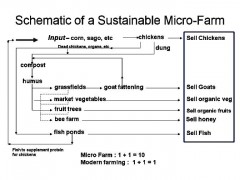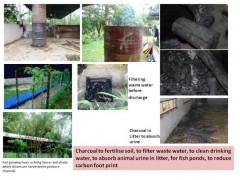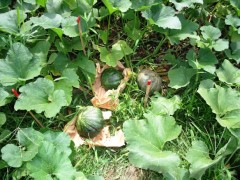Mar 19, 2012
Interesting Trees At The Farm - I
Finally the kapok tree have fruits and the workers are looking forward to fresh stuffing for their pillows.
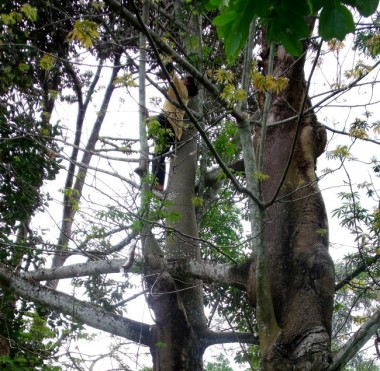
Up the kapok tree shaking the pods (fruits) down.
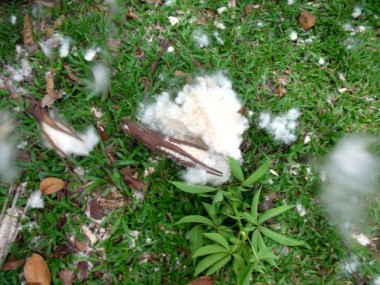
Fallen pods (actually fruits)
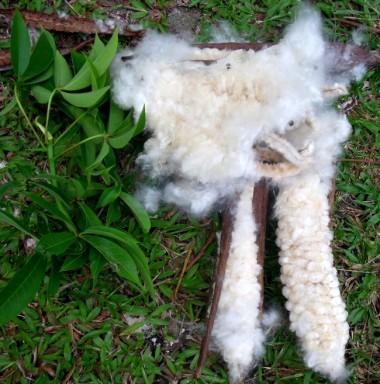
Close up of pods, the fluffy kapok fibre, and leaves.
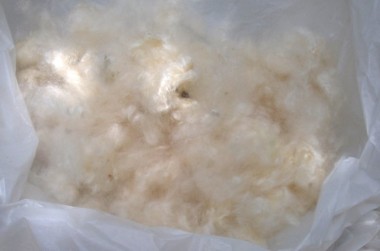
The fibre that will be used to stuff the pillows.
Isn't it time to reintroduce these fibres? They were replaced by cheap material made from petrochemicals. It may be the time now to start bringing these fibres back using modern technology to treat them to last longer etc. A kapok tree can remain productive for 500 years; how's that for sustainability!.
At the farm, we are constantly looking for material found in nature to use and to reuse.
15:10 Posted in Sustainable Farming, Useful Plants | Permalink | Comments (0) | Tags: kapok, ceiba pentandra, sustainable farming, sustainable forestry, income generating forest trees
Mar 05, 2012
Flowering Enhancers - I
Some of the fruit trees shall be flowering soon. Time to make some flowering enhancers. Fermented flowering enhancers provide potassium and phosphorus, plus microbes to help the plants absorb the nutrients.
We use a large plastic container with a lid.
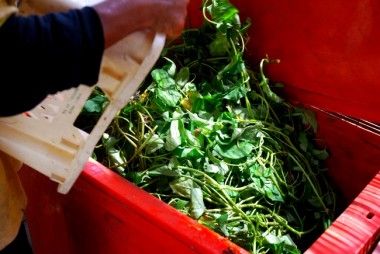
Add 10 kg of kangkung.
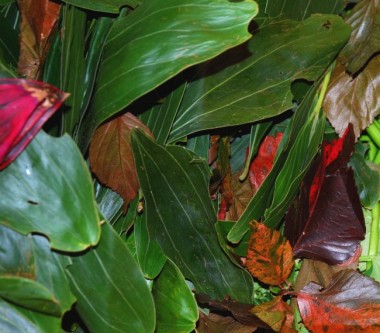
And 10 kg young acacia mangium leaves.
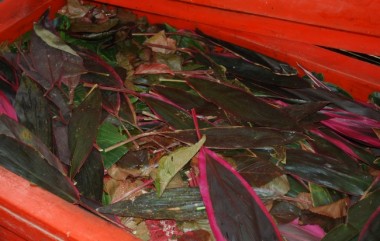
And 10 kg of red colored leaves.
Now add the potassium and phophorus:

25 kg of papaya and 25 kg of bananas.
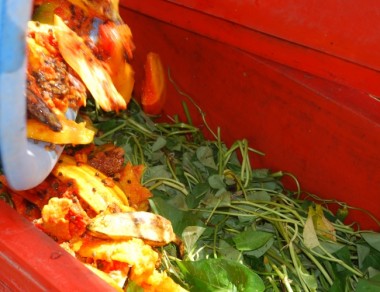
Put them together, leaves at the bottom.
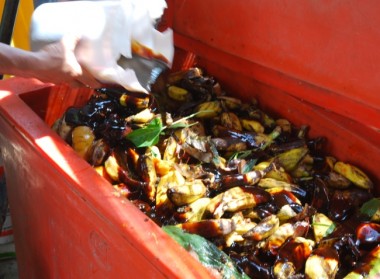
Add some molasses (agri grade, from Pertanian), about 20 kg will do.
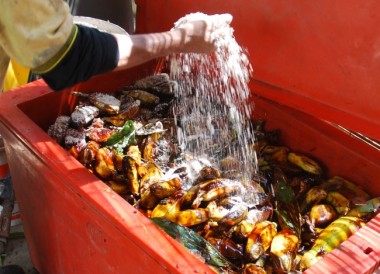
Sprinkle about 500gms quarry (granite) dust into the mix.
Cover with a plastic sheet, close the lid, and let ferment for 30 days.
(To be continued : Flowering Enhancers - II; How To Use)
14:03 Posted in Bio Nutrients, Sustainable Farming | Permalink | Comments (0) | Tags: bio nutrients, em, nature farming, sustainable farming
Nov 02, 2009
Sustainable Farming - A Model
To be sustainable, inputs must be less than outputs. Inputs include fuel and all forms of energy, labour and raw materials. Even treatment of wastes must not consume excessive energy. For a farmer to practice sustainable agriculture, he must derive a reasonable income from his efforts.
This is a model for sustainable agriculture we developed at our farm (click to enlarge):
This how an acre of land may look like (click to enlarge):
We calculated a net income of RM3000 to RM5000 per month is possible from such a farm.
10:22 Posted in Sustainable Farming | Permalink | Comments (3) | Tags: sustainable farming, sustainable agriculture
Jul 27, 2009
Charcoal for Sustainability
We produce our own charcoal for multiple use at the farm: to bury carbon as part of the requirement for responsible animal husbandry, to use it to absorb urine and reduce ammonia in litter, to act as a filter in aquaculture, to clean waste water before discharging into rivers, to use as fertiliser for our fruits and vegetables, and to use as a more efficient source of fuel.
We plant fast growing trees such as acacia mangium and gliricidia septium as a renewal source of wood for charcoal production. The fast growing trees are planted where ever we have chickens, even right next to the coops or rebans.
In the fields, they not only convert CO2 to carbon, but also absorb nutrients from the chicken dung.
In this way, we try to reduce our carbon footprint, which should be a required part (and parcel) of the process of raising animals for food.
Click on the picture below for enlarged view:
09:45 Posted in Sustainable Farming | Permalink | Comments (1) | Tags: biochar, retort, sustainable farming
Jun 28, 2009
Sustainable Farming
Sustainable farming in practice here:
1. This is a 'No-Dig' 35 feet x 10 feet pumpkin patch. Barely 2 months, we now have 42 pumpkins (the red tips mark the pumpkins), with more to come judging by the flowers.
2. The original soil is sandy. We build up the beds using compost, some soil and mulch.
3. Three varieties of pumpkins are planted here, creating diversity to reduce outbreaks of insect or fungal and bacterial problems. So far we have had one bacterial problem which we quickly addressed by uprooting and destroying the plant. Fungal problems have been minimal and have been addressed by quick action using cassia alata juice. Insects have not been serious. The beetle A. abdominalis is present but does not seem to cause any problems to the pumpkin plants.
4. No purchased fertiliser, or any other input have been used here. We only use our farm made compost.
5. We are now looking forward to see whether a second crop of pumpkins using the same plot of land can produce similar yields. That would really be a test of sustainability.
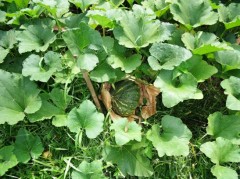
17:45 Posted in Sustainable Farming | Permalink | Comments (2) | Tags: sustainable farming, pumpkins
Mar 15, 2009
Farm Visit March 15, 2009
Retailers and customers of DQ Chicken came to the farm today to see for themselves how the farm is managed, and the farming methods used.
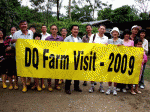
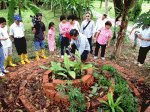
The herb spiral drew interest
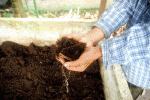

For the priviledge of visiting the farm, you have to smell this compost made of dung, carcasses and dried leaves and branches.
You also have to smell a still used chicken litter that has not been removed for 7 years, from one of the coops.
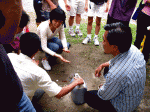
Feeling the Qi

Looking for Qi
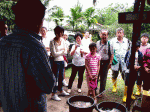
Qi Tea for spraying on plants
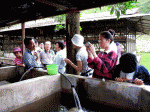
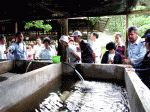
High productivity aquaculture - one tiny pond such as this can fetch a revenue of RM10,000 per cycle of 6 months.
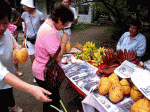
Then fruits from the farm for everybody.
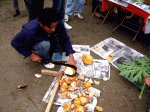
Coconuts to quench your thirst after a hot day walking around.
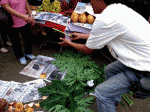
Here's a straw from a papaya leaf stem to drink your coconut water with.
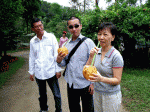
Yummy, perfect end to a hot day.
18:53 Posted in Visitors | Permalink | Comments (2) | Tags: sustainable farming, organic farming, farm visits, nature farming








